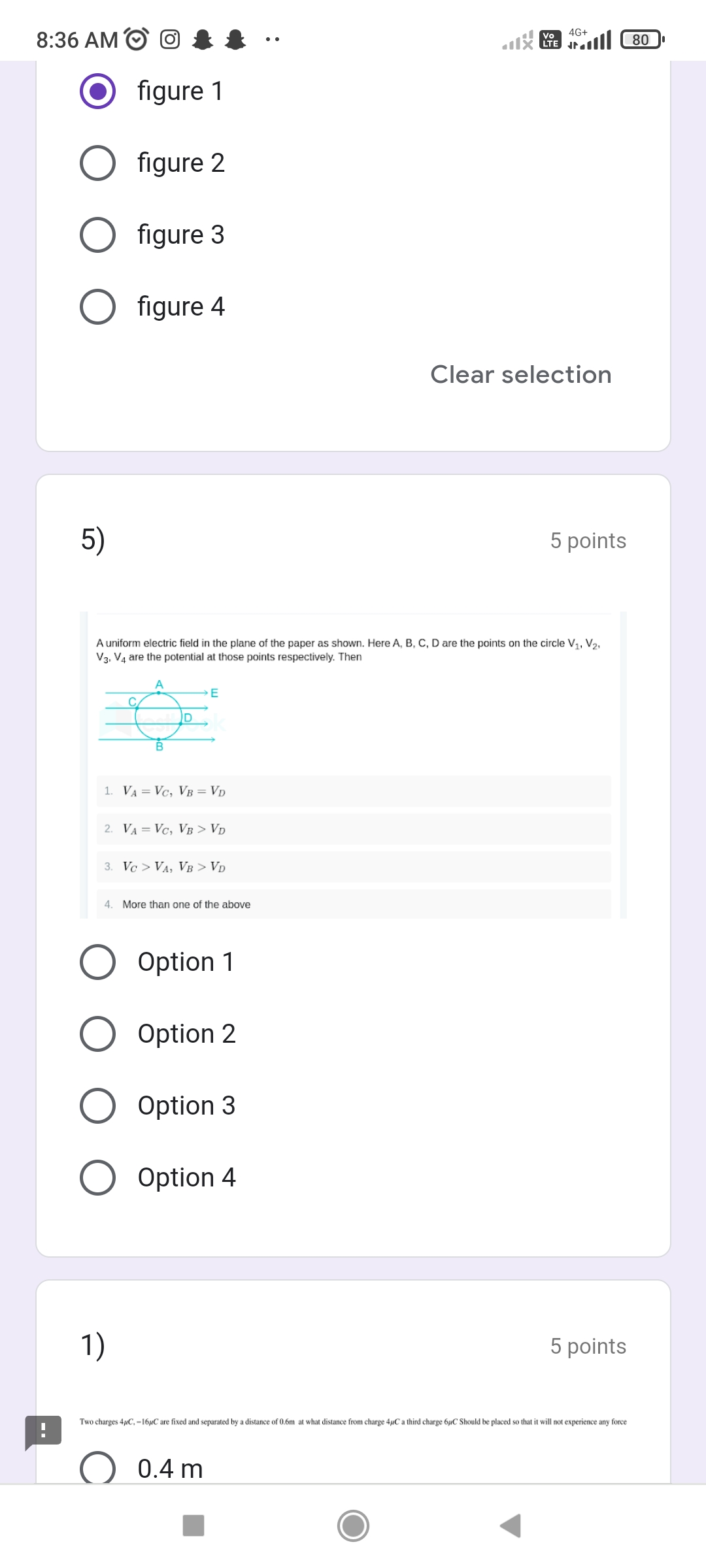A uniform electric field in the plane of the paper as shown. Here A, B, C, D are the points on the circle, V1, V2, V3, V4 are the potentials at those points respectively. Then: 1)... A uniform electric field in the plane of the paper as shown. Here A, B, C, D are the points on the circle, V1, V2, V3, V4 are the potentials at those points respectively. Then: 1) VA = VC, VB = VD 2) VA = VC, VB > VD 3) VC > VA, VB > VD 4) More than one of the above.

Understand the Problem
The question is asking about the behavior of electric potentials at different points in a uniform electric field. It particularly wants to determine the relationship between the potentials at points A, B, C, and D, as well as the implications of the configuration shown in the accompanying figure.
Answer
VA = VC, VB = VD.
The final answer is VA = VC, VB = VD.
Answer for screen readers
The final answer is VA = VC, VB = VD.
More Information
In a uniform electric field, points equidistant along the field direction share the same potential. Since A and C, B and D are symmetrically positioned, the potentials are equal.
Tips
A common mistake is assuming the potential differences are due to spatial differences not aligned with the electric field.
Sources
AI-generated content may contain errors. Please verify critical information